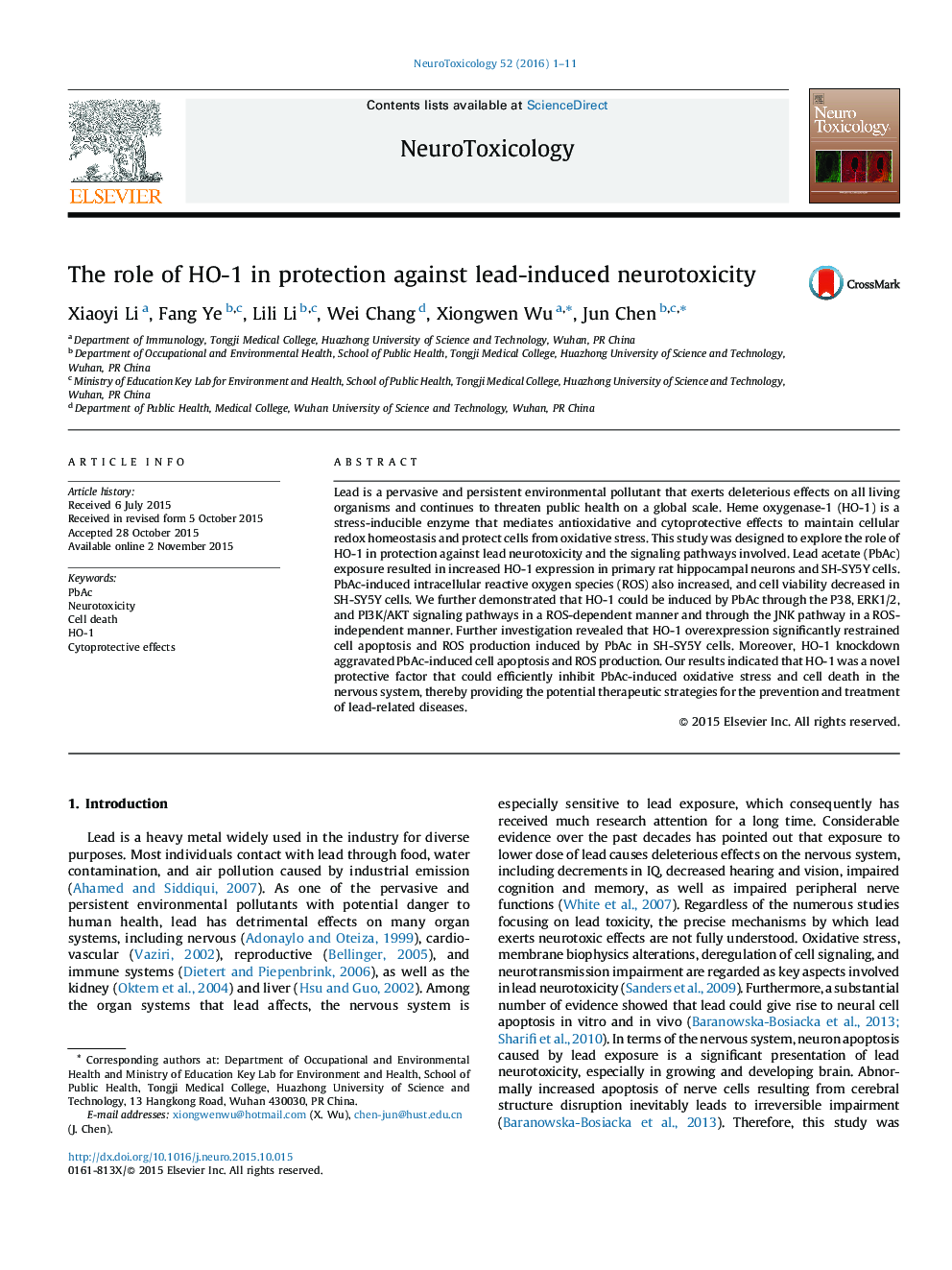| Article ID | Journal | Published Year | Pages | File Type |
|---|---|---|---|---|
| 5854653 | NeuroToxicology | 2016 | 11 Pages |
Abstract
Lead is a pervasive and persistent environmental pollutant that exerts deleterious effects on all living organisms and continues to threaten public health on a global scale. Heme oxygenase-1 (HO-1) is a stress-inducible enzyme that mediates antioxidative and cytoprotective effects to maintain cellular redox homeostasis and protect cells from oxidative stress. This study was designed to explore the role of HO-1 in protection against lead neurotoxicity and the signaling pathways involved. Lead acetate (PbAc) exposure resulted in increased HO-1 expression in primary rat hippocampal neurons and SH-SY5Y cells. PbAc-induced intracellular reactive oxygen species (ROS) also increased, and cell viability decreased in SH-SY5Y cells. We further demonstrated that HO-1 could be induced by PbAc through the P38, ERK1/2, and PI3K/AKT signaling pathways in a ROS-dependent manner and through the JNK pathway in a ROS-independent manner. Further investigation revealed that HO-1 overexpression significantly restrained cell apoptosis and ROS production induced by PbAc in SH-SY5Y cells. Moreover, HO-1 knockdown aggravated PbAc-induced cell apoptosis and ROS production. Our results indicated that HO-1 was a novel protective factor that could efficiently inhibit PbAc-induced oxidative stress and cell death in the nervous system, thereby providing the potential therapeutic strategies for the prevention and treatment of lead-related diseases.
Related Topics
Life Sciences
Environmental Science
Health, Toxicology and Mutagenesis
Authors
Xiaoyi Li, Fang Ye, Lili Li, Wei Chang, Xiongwen Wu, Jun Chen,
